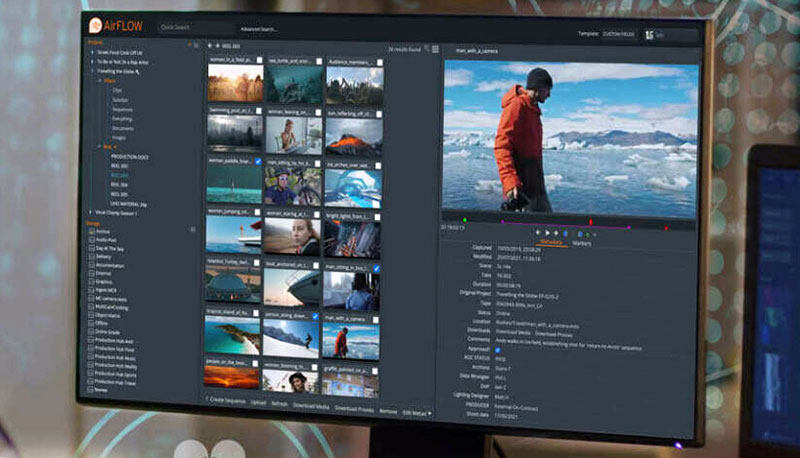EditShare’s Lee Griffin shows how EFS Swift Link, a new feature in the next EditShare release, supports remote team work, with the same creative control and without downloading media.

Remote collaboration has become a mainstream feature for production, post and finishing workflows partly due to the pandemic, but also to the universal, on-going need to trim costs.
Editshare’s AirFLOW application has always been available to integrate remote workflows – editors can work in their regular NLE while staying connected to the enterprise shared storage system. It’s important to access whatever tool is best for the job and maintain creativity whether they are in the facility or working outside.
However, in a recent online post EditShare’s VP Business Development Lee Griffin showed how EFS Swift Link – one of the features coming up in the next EditShare release – can be used to support team work from anywhere, with the same level of creative control and without downloading media.
Re-Creating the Experience
Lee said that the persistent challenge of remote work is still about re-creating the experience the editor would have in their company’s facility. EFS Swift Link serves to bridge the gap between remote editing and centralised EditShare EFS storage systems, on-premises or in the cloud. The EFS client adapts to the network conditions of individual workstations, which means users maintain a strong connection to the storage network.

Wherever editors are, they have access to both proxies and high-resolution media. Achieving that access depends on the Swift Link’s understanding of the capacity and quality of the data connection between the remote workstation and base. Therefore, one of the software’s main features is its ability to detect network latency.
Instead of editors having to stop and optimise their connections, Swift Link does this work automatically to keep performance consistent, even on high-latency connections. Also, individual users are not obliged to change the hardware, software or workflows they are used to – Swift Link directly integrates with the current setup.
Continuous Optimisation
SwiftLink is largely concerned with optimisation. EditShare Connect, the application members of a team use to access EFS storage on their workstations, has a simple interface that also makes it easy to connect to remote EditShare systems. Instead of setting up a complex configuration, the user just connects to the network through the Connect UI, directly or via a VPN, and the client configures the connection in the background.

Once connected, EFS Swift Link uses its automatic latency detection to continue optimising the connection. Regardless of a user’s location or network conditions, the system adjusts to achieve the least disruption and greatest performance possible at any given time.
Swift Link supports multiple locations and collaborative workflows in which team members are spread across different locations. As always, editors can work on the same project simultaneously, review each other’s work, and exchange feedback in real time, as if they were together. All the standard features of EFS are still available, including bin locking, auditing and consistent drive letter naming, and security is maintained owing to the integrated EditShare data protection systems and the permissions structure.
The main advantage of using Swift Link is that editors and content creators can choose their working environment without affecting functionality, familiarity and collaboration.
It is also cost-effective. Everyone retains their existing equipment and workflows, and does not need to undertake software or hardware upgrades. No downtime is required to learn new tools and workflows. If an editor works best in Media Composer, Adobe Premiere Pro or DaVinci Resolve, then they can use it, embedded in the EditShare system. editshare.com



